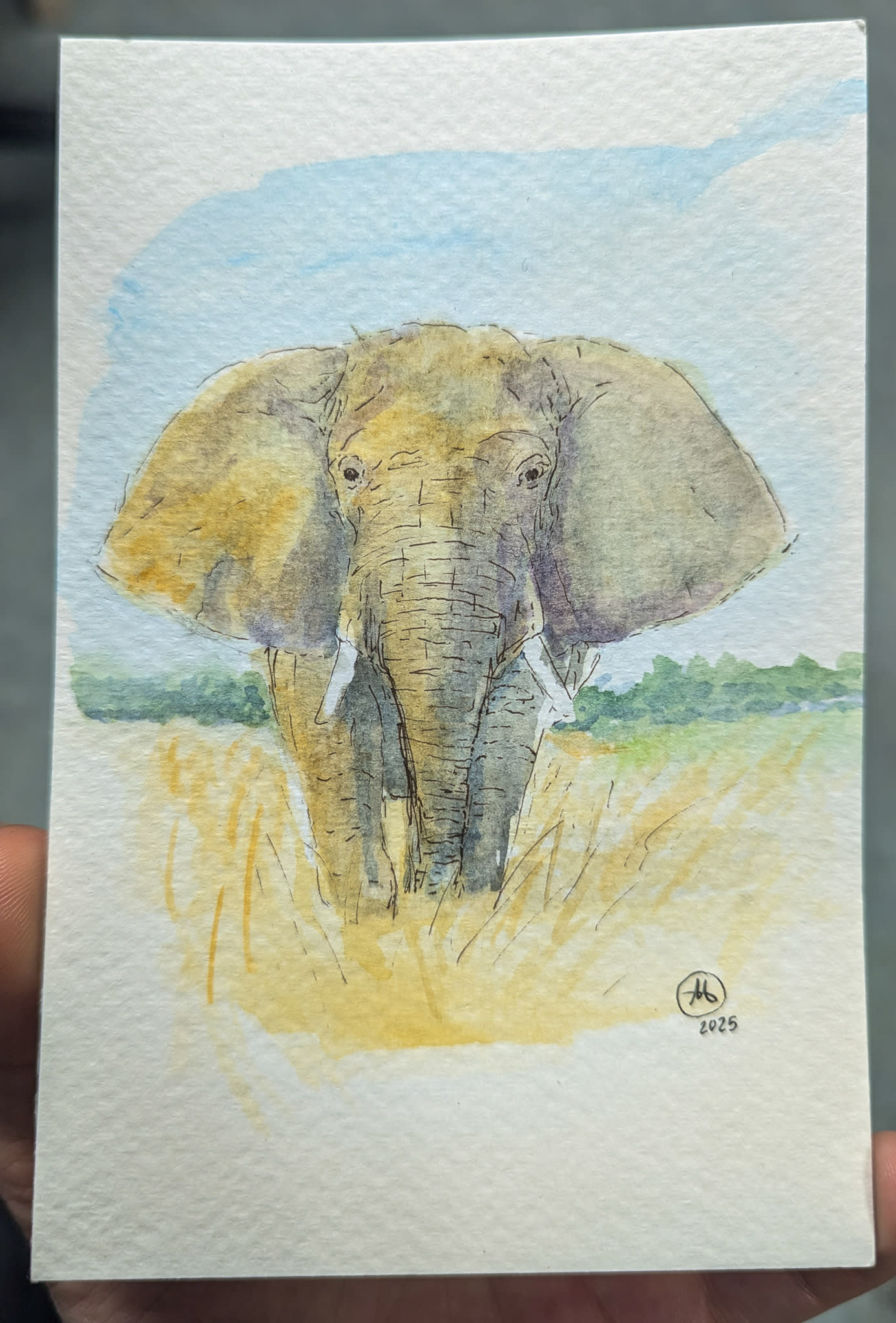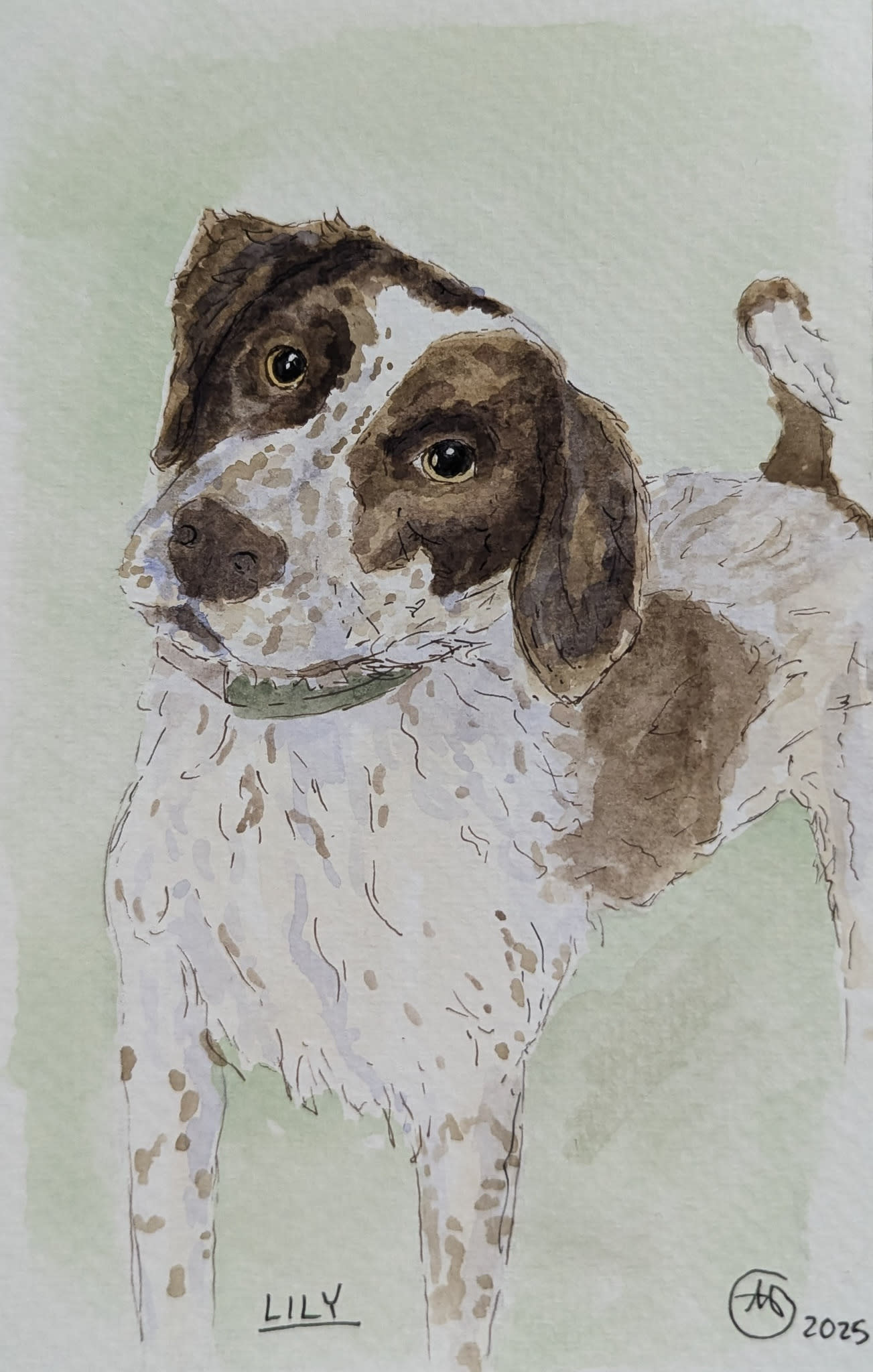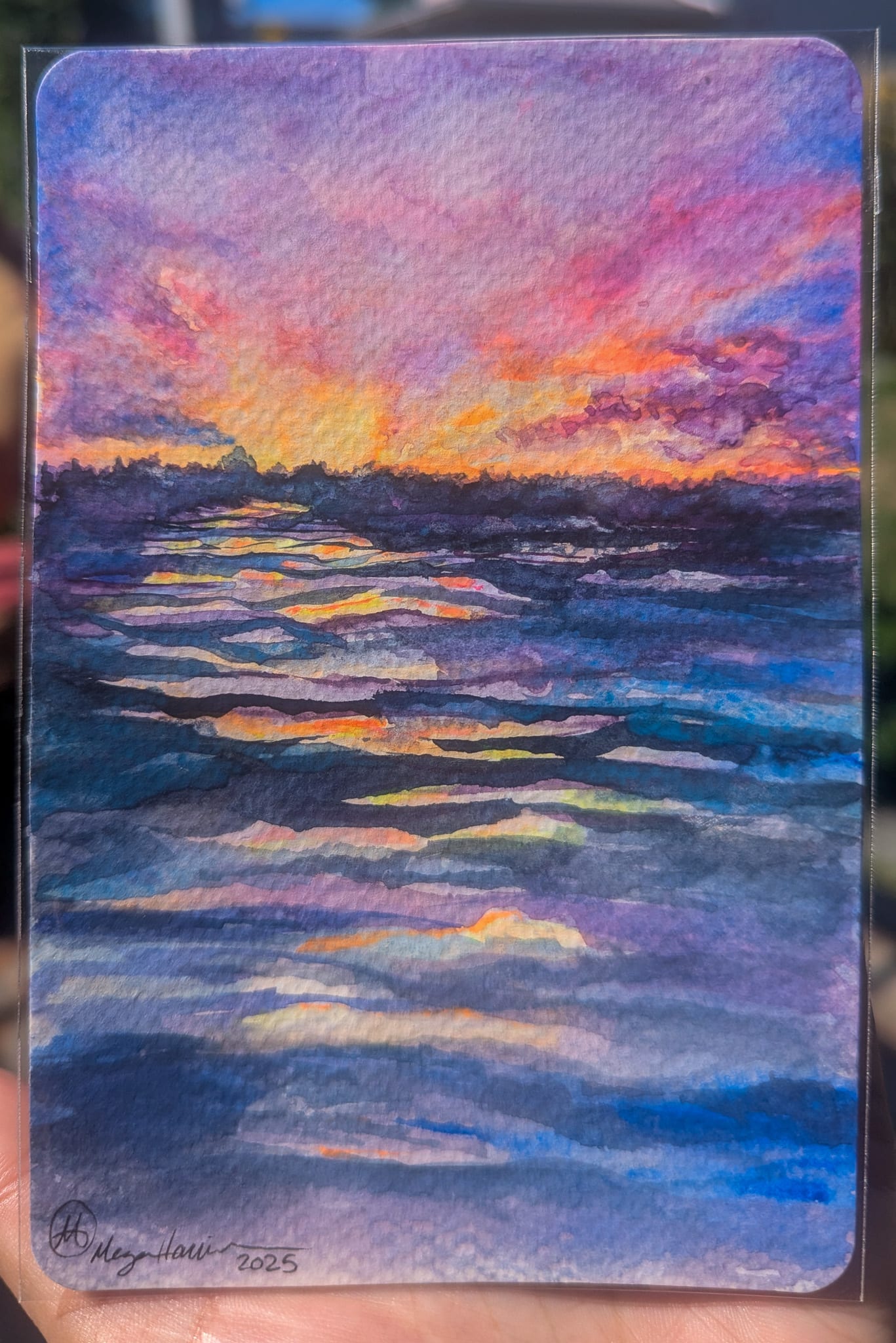“I just wanted him to have something personal to carry home after saying goodbye to his son,” says Megan Harrison, Intensive Care Unit Nurse.
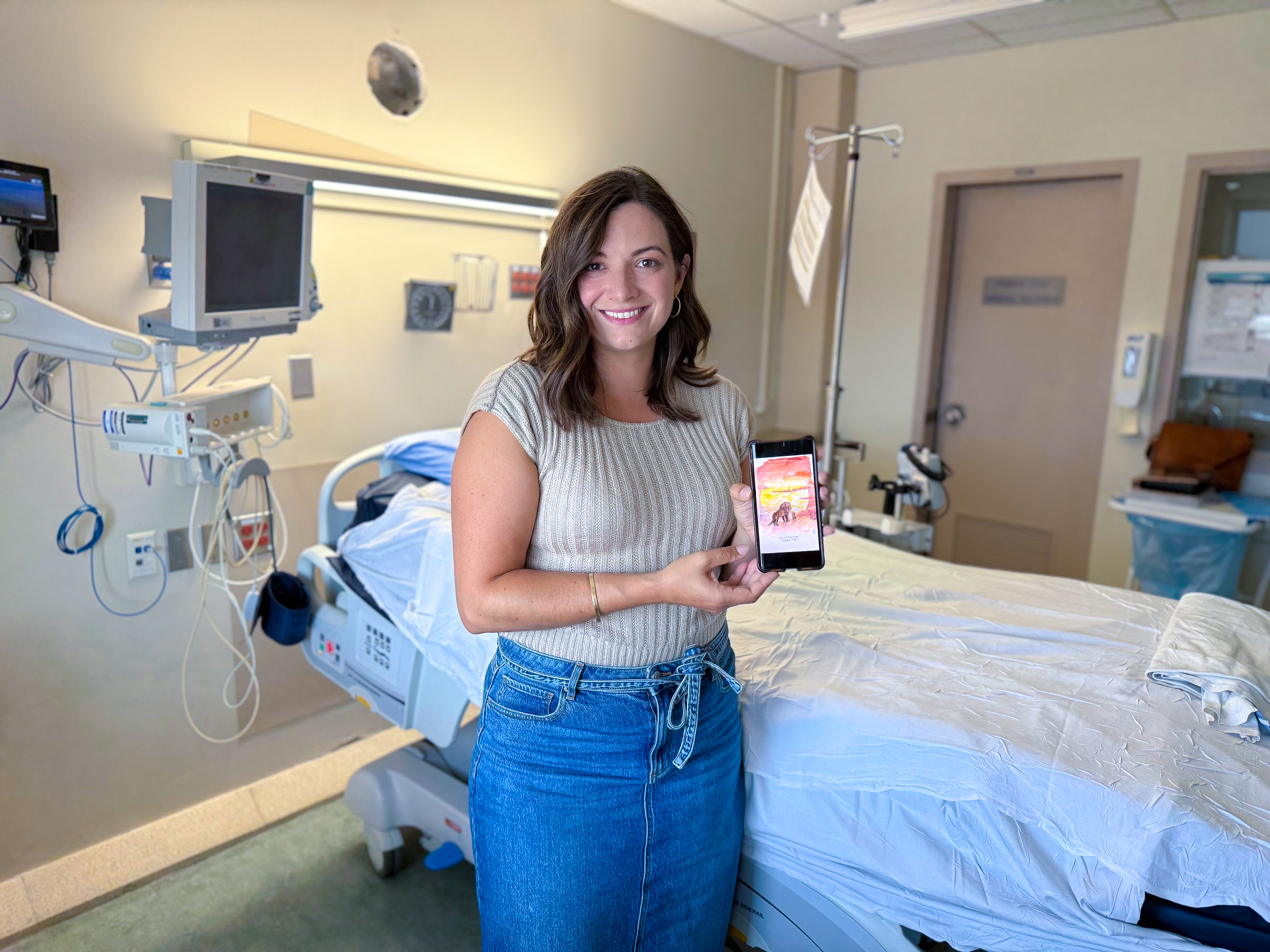
The request came late one night from a co-worker: could Megan Harrisson prepare a handprint for a young patient whose care would soon be withdrawn? The family wanted something to hold onto.
Harrisson gathered her supplies and got to work. But she didn’t stop at a simple handprint. She thought about the boy’s favourite movie, The Lion King, and the bond he shared with his dad. By morning, she had created a small watercolour painting of Simba and Mufasa. She added a handwritten note on the back and quietly passed it along to the patient’s father. He held it close.
By morning, she had created a small watercolour painting of Simba and Mufasa. She added a handwritten note on the back and quietly passed it along to the patient’s father. He held it close.
“I just wanted him to have something personal to carry home after saying goodbye to his son,” she says.
For Harrisson, an ICU nurse since 2019, moments like this reflect the heart of her work.
“Beyond just snapping into the mode of doing what’s needed in critical care, it’s about being able to see the humanity of it,” she says.
Families arrive in the ICU during the hardest, most vulnerable moments of their lives.
“To be able to just show up for them, to be there with them too — that’s what matters most.”
During the pandemic, Harrisson took an eight-month leave. The stress and weight of it all had built up and she needed space to reset. She spent her time in nature with her cat, carrying a small bag of paints and paper on her hikes. Painting started as a way to ground herself.
“I even bought these little four-by-six papers so it wouldn’t feel intimidating. I just wanted to take the pressure off and be present,” she says.
The joy she found in painting slowly extended to others. She started giving her watercolours away — to strangers, to friends — and discovered how much meaning art can carry when shared. When she returned to the ICU, that practice came with her. She started painting for patients while on those hikes with her cat.
Harrisson doesn’t plan her paintings for patients. Instead, she begins with questions: What brings you joy? What place feels peaceful to you?
At first, patients are often caught off guard.
“But everyone can think of something,” she says. “It doesn’t have to be complicated.”
Sometimes the requests are simple — a sunset over water, an animal, a flower. Other times, the meaning is hidden even from her.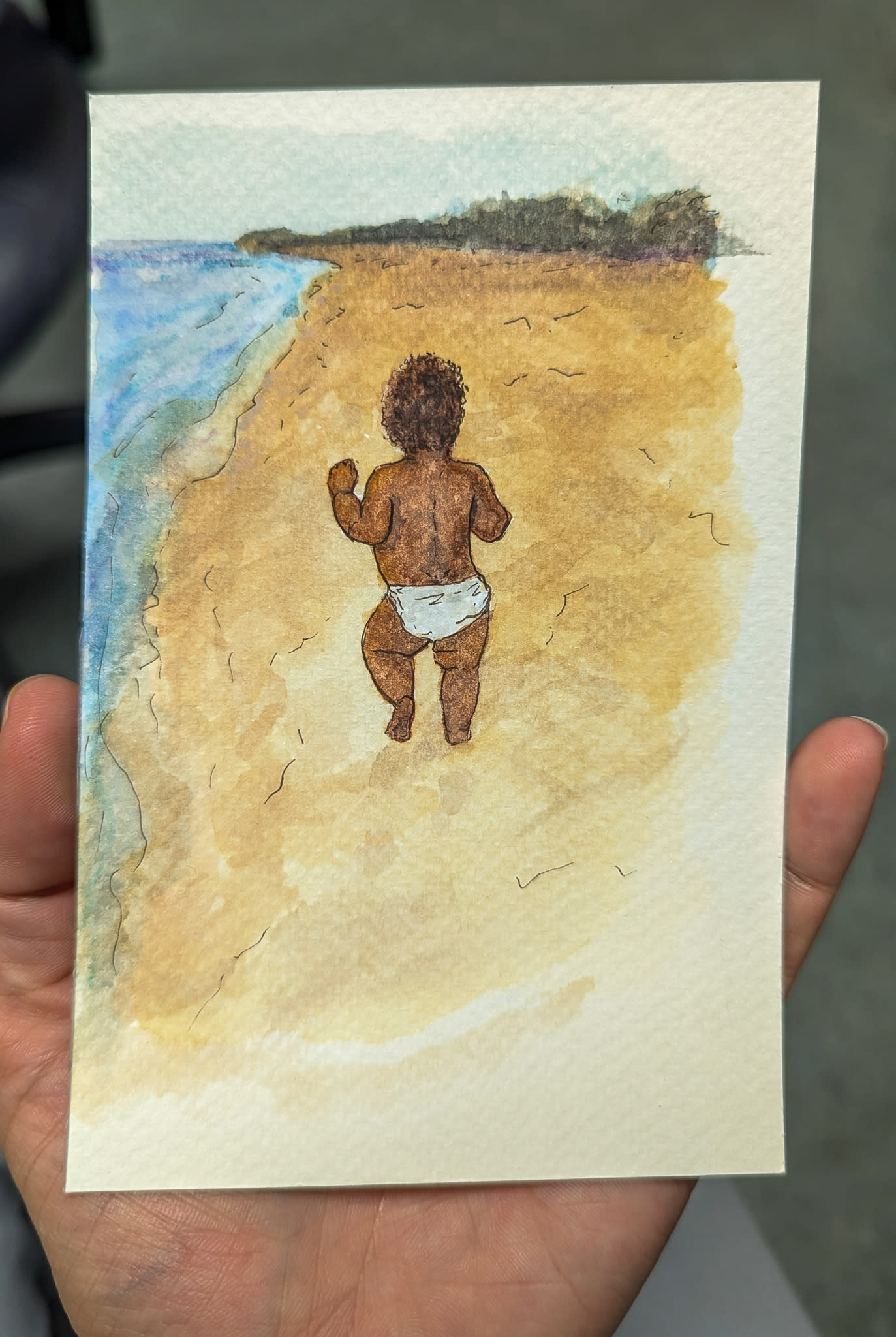 One patient asked for a painting of a child running. She didn’t ask why, she simply imagined the child running down a beach, free and full of life, and brought the picture to him the next day. Only later did she learn that his grandson had died young. The simple watercolour became more than just a picture — it became a way for him to hold onto his family.
One patient asked for a painting of a child running. She didn’t ask why, she simply imagined the child running down a beach, free and full of life, and brought the picture to him the next day. Only later did she learn that his grandson had died young. The simple watercolour became more than just a picture — it became a way for him to hold onto his family.
“I had no idea how meaningful it would be,” Harrisson recalls. “One of my friends, a co-worker, messaged me later saying how he just kept looking at it and holding it and saying how much he really appreciated it.”
There are other moments she carries with her. Harrisson remembers one patient in particular. She had painted a small elephant for her, nothing elaborate. When Harrisson placed it in her hands, the woman held on tightly — not just to the painting, but to Harrisson’s hand. The appreciation in her eyes said more than words could.
“I’m shocked I’m emotional right now,” Harrisson says, thinking back to that moment. “But it wasn’t even about the painting itself. It was the gesture. It’s about showing them that someone’s going to be there through it all and that they’re not alone.”
Her colleagues have felt the impact as well. She has painted for coworkers, created murals for nurseries, even done maternity photoshoots for friends in the unit.
“This is my jam,” she laughs. “The same way someone else might grow things in their garden and share homemade jam — this is what I have to share.”
“Megan’s positivity and dedication are quite noticeable,” says Bonnie Morrison, an ICU Charge Nurse who works alongside Harrisson. “Megan goes above and beyond for patients and their families through painting watercolour pictures on her own time, dying patients’ hair and just sitting and listening. In every brushstroke and every kind word, Megan brings comfort where medicine cannot reach. I love when she walks through the door of our ICU unit.”
Recently, Harrisson received the Extraordinary Patient Experience Award during Niagara Health’s Awards of Excellence ceremony. The recognition, she says, is meaningful, but not because of the title itself.
“I could paint things for patients all the time and just hand them out willy-nilly,” she says. “But what actually makes it meaningful is the moment when I can give something to a patient and it really means something to them.”
What she hopes others take from her story is simple: “At the core of it all, I wish that everybody would slow down and try to connect with themselves and what brings them that joy in life. I think we’ve all been caught on this hamster wheel and it’s so easy to lose that purpose or joy. But when you do slow down, you can actually connect — with yourself, with others, with the world around you so that when these rough moments happen in life, people maybe don't feel as isolated or as vulnerable.”
For Harrisson, that connection lives both in medicine and in art. In every patient conversation, every brushstroke, every quiet act of care, she continues to bridge the two. So far, she has completed nearly two dozen paintings for patients and their families.
“I guess I’m trying to find meaning in even the smallest moments,” she says. “If I had time to paint every patient a watercolour, I would.”
Find Harrisson’s art on Instagram: @harrissmegmakesthings
Article written and photographed by Diane Moore, a senior communications specialist at Niagara Health.
